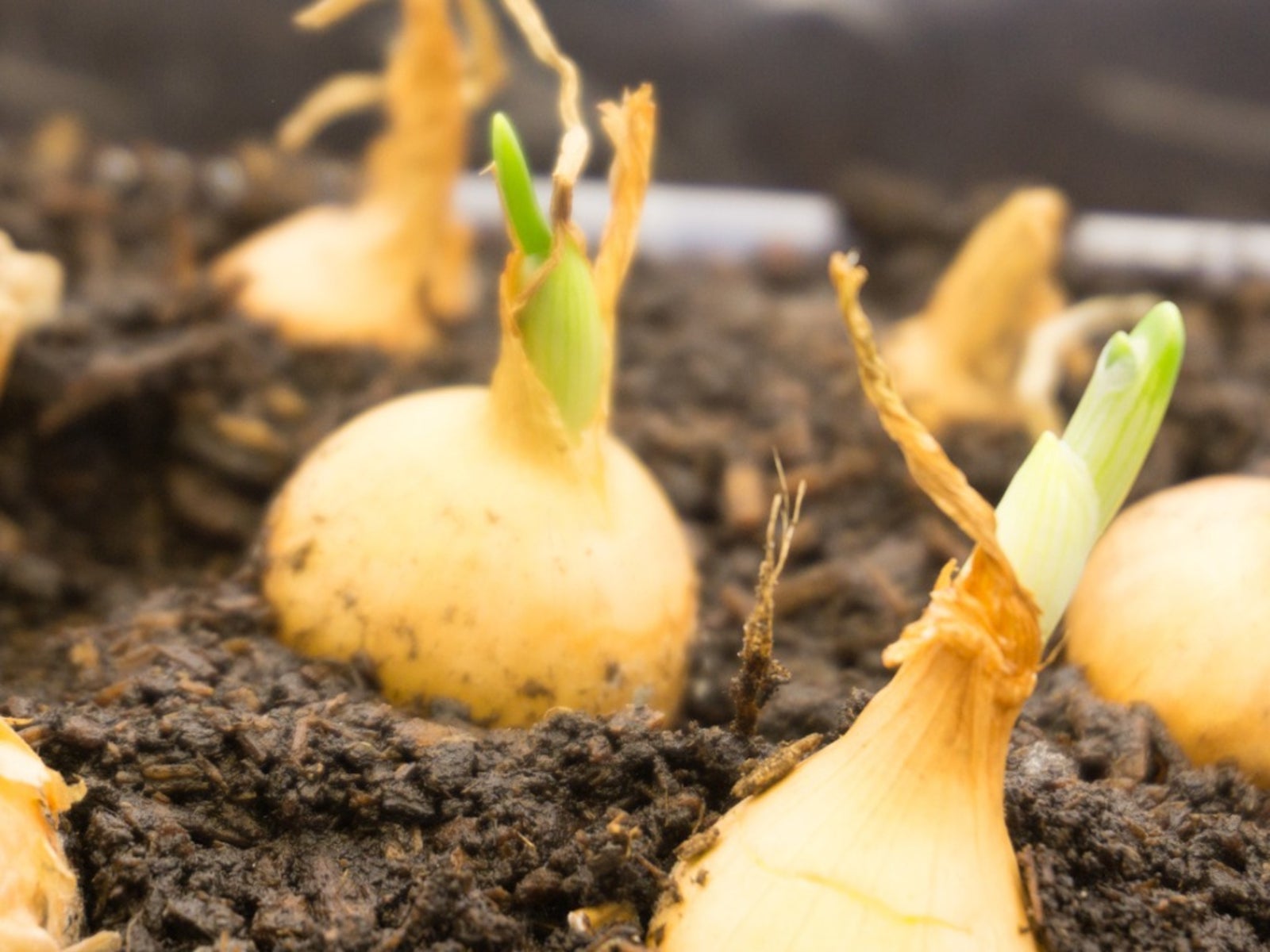My Plant Bulb Is Surfacing: Reasons For Bulbs Coming Out Of Ground


Spring is in the air and your bulbs are just starting to show some foliage as they get started on providing you with a dazzling display of color and form. But wait. What have we here? You see flower bulbs coming to the surface and there is still a danger of frost and freezing conditions. Heaving of bulbs is common and may be the result of weather conditions, soil porosity, planting depth, or just the variety of plant bulb. You need to take action to protect the bulbs from cold and animals and learn how to stop bulbs from coming out of the ground.
Bulbs and Soil Conditions
One reason you may see bulbs coming out of the ground is improper site condition. Soil for bulbs needs to be rich and organic, well worked, and free draining. Bulbs will rot in boggy soil, and they have difficulty growing up through hard pan or heavy clay. Amend the bed with plenty of organic matter to increase porosity or the area will get waterlogged, freeze, and force the bulbs up out of the soil as it thaws and refreezes. Soil that doesn't drain will also get muddy and bulbs can literally float up to the surface of the ground and get trapped there as the water recedes.
Winter Related Heaving of Bulbs
Winter is characterized by wicked weather. In many regions, it is comprised of freezing rain, snow, heavy rain, and thick icy rime over the ground. Periods of thawing are common as the winter nears its end, but a freeze is likely to follow. This contractive action actually moves the soil and, therefore, pushes the bulbs up to the surface if they are not planted deeply enough. The process is called frost heaving. The proper depth for planting varies by bulb but on average, install them three times the diameter of the bulb deep in the soil. Winter conditions will also tend to erode the soil, so planting depth becomes especially crucial to reduce the chance of bulbs coming out of the ground.
When Flower Bulbs Coming to Surface is Normal
Looking around your flower bed you see a plant bulb is surfacing. It's not time to panic if the bulb is a certain variety. Nerine bulbs, for example, tend to collect at the top of the soil. Flower bulbs that naturalize, such as tulips and daffodils, will produce clusters of bulblets that can push to the surface of the soil. Snowdrops also naturalize and produce thick groups of the plant with their bulbs often just at the surface of the soil. For the most part, this isn't a big deal. Just dig the bulb up and gently plant it deeper. In urban or rural areas, one of the most common reasons for bulbs to be exposed is due to varmints. Squirrels are the primary culprits, but even the neighborhood dog might be digging them up. Again, if the bulbs are undamaged, simply replant them as you find them to protect the bulb from other influences. It is normal to see what looks like a plant bulb surfacing if it is a root crop. Onions rise to the surface, radishes push up and expose their ruby skin, and even rutabagas will surface to expose themselves to the tender ministrations of the garden slugs. Proper soil condition is again a cause of this, so remember to work your soil until it is airy and fluffy before planting any root vegetables.
Sign up for the Gardening Know How newsletter today and receive a free copy of our e-book "How to Grow Delicious Tomatoes".

Bonnie Grant is a professional landscaper with a Certification in Urban Gardening. She has been gardening and writing for 15 years. A former professional chef, she has a passion for edible landscaping.